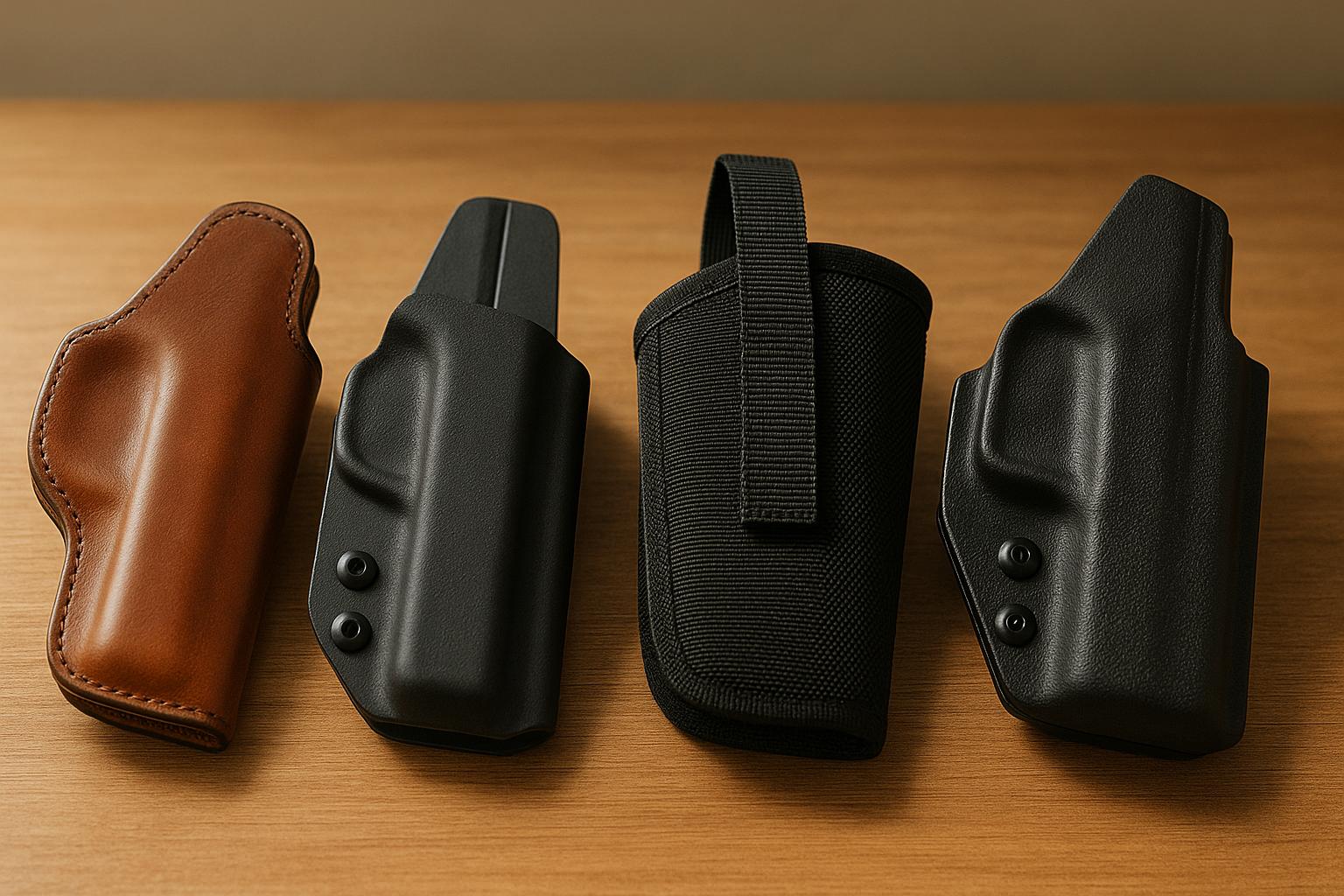The Leather Lifecycle: How Weather Affects Holsters and How to Protect Them

For owners of firearms, a leather holster is far more than just a carrying apparatus; it is an essential piece of gear that combines utility, tradition, and artistry. The material itself—leather—is renowned for its strength, beautiful aging process, and the custom fit it develops around a specific firearm. However, as an organic material, leather is inherently vulnerable to the very forces of nature it is often required to endure. Exposure to harsh weather, from relentless rain and high humidity to blistering sun and extreme cold, can compromise a leather holster’s structural integrity, fit, and appearance. Understanding the specific ways weather impacts leather and adopting a rigorous maintenance regimen is crucial for ensuring the holster remains a reliable and safe piece of equipment for decades to come.
The relationship between leather and weather is fundamentally tied to moisture. Leather is essentially a hide that has been tanned to preserve it. When exposed to different environmental conditions, it will seek to reach equilibrium with the surrounding humidity. This constant push and pull of moisture is the source of nearly all weather-related damage, leading to issues ranging from minor aesthetic changes to critical structural failure.
The Assault of Water and Humidity
Water is leather’s greatest enemy. When leather holsters becomes saturated with rain or is exposed to prolonged high humidity, the moisture is absorbed deep into the fibers. This process causes the leather fibers to swell.
When a leather holster gets wet, the cardinal rule is to let it dry slowly and naturally. Never use direct heat sources like hair dryers, ovens, or direct sunlight, as rapid heat will cook the remaining oils out of the leather, causing it to become brittle, crack, and permanently shrink.
The Desiccation of Sun and Heat
On the opposite end of the spectrum, extreme heat and prolonged direct sunlight present a different, equally destructive threat: desiccation. The sun’s UV rays and high ambient temperatures dry out the leather’s natural oils and any conditioning treatments applied to it.
- Cracking and Brittleness: As the leather loses its oils, its fibers contract, and the material becomes stiff and brittle. This often leads to surface cracks, particularly along stress points like seams, edges, and the mouth of the holster. Once leather cracks, the damage is irreversible and the material’s lifespan is significantly shortened.
- Fading and Discoloration: Direct sunlight will cause the dyes in the leather to break down and fade rapidly. A beautifully colored holster can quickly become mottled and bleached, ruining its aesthetic appeal. The heat can also cause protective coatings and waxes to soften and potentially affect the finish of the firearm itself if the two are stored together for extended periods.
For these reasons, a leather holster should never be stored on a windowsill, inside a hot car, or left exposed to direct summer sun for hours on end.
Protection Strategy: The Essential Maintenance Regimen
Protecting a leather holster from the weather requires a proactive, three-step regimen of cleaning, conditioning, and sealing.
1. Cleaning: Before applying any protective products, the leather must be clean. Use a damp cloth to wipe away any surface dust, dirt, or debris. For deeper cleaning or to address salt residue (from perspiration or rain), use a specialized, pH-balanced leather cleaner. Avoid using harsh household soaps or detergents, which can strip the leather’s essential oils. If the holster has been exposed to salt, it is crucial to wipe the surface down as salt can wick moisture out of the leather, exacerbating dryness.
2. Conditioning: This is the most vital step in moisture management. Conditioning replaces the natural oils that the leather loses through use, time, and exposure to the elements. A high-quality leather conditioner—like neat’s-foot oil, mink oil, or specialized leather balms—should be applied every few months, or immediately after a severe soaking. The conditioner keeps the leather pliable, prevents cracking, and maintains its suppleness. Apply a small amount and work it thoroughly into the leather fibers, paying extra attention to the edges and seams.
3. Sealing/Waterproofing: For holsters that are frequently exposed to rain or snow, applying a sealant or specialized leather wax is essential. Products containing natural waxes (like carnauba or beeswax) create a barrier on the surface of the leather that repels water penetration. This external barrier prevents the leather from becoming saturated, protecting the internal fibers and the holster’s shape. This sealing step should be renewed periodically as the wax barrier wears down with friction and use.
Proper Storage: The Final Defense
Beyond topical treatments, how and where you store your leather holster is the final layer of protection. Always ensure a holster is completely dry before storing it away. If it has gotten wet, wick out as much moisture as possible with a dry cloth, and then place it in a well-ventilated area away from direct heat or sun. For retention, you can insert the unloaded firearm or a plastic mold while the leather dries to help it retain its correct, custom shape. Never store leather in a plastic bag or any airtight container, as this traps moisture and guarantees mold growth. Proper storage, combined with a meticulous cleaning and conditioning regimen, ensures that a leather holster will remain a safe, effective, and beautiful piece of gear throughout the years, regardless of the weather it encounters.





